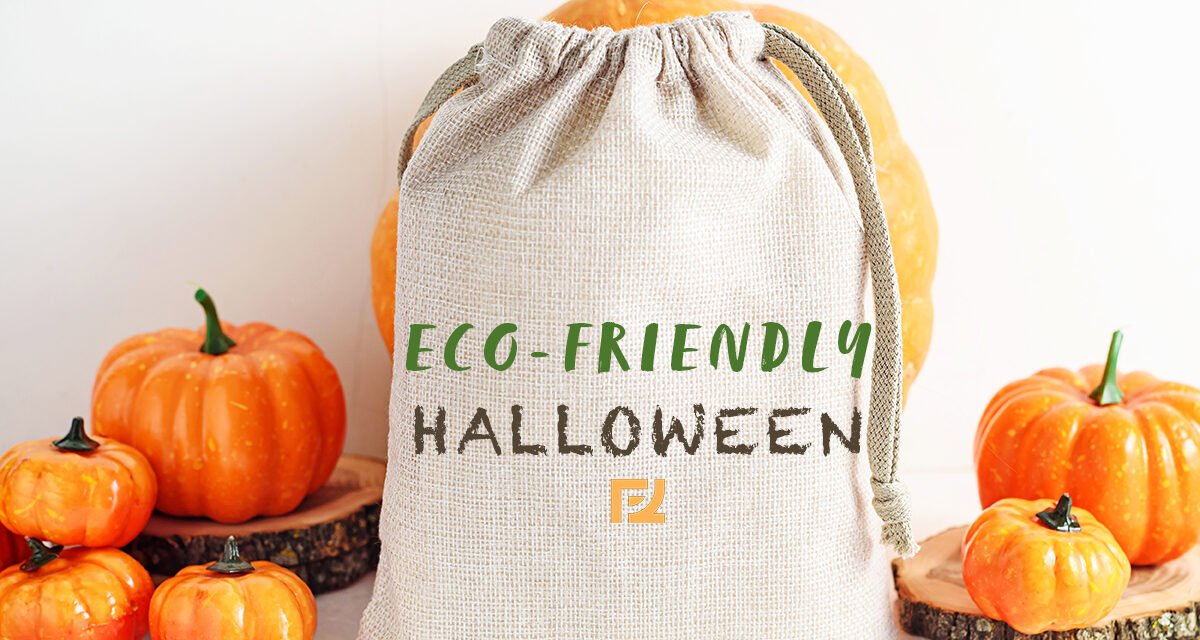Halloween is a holiday with deep cultural roots, with traditions that evolved over centuries. It originated from several ancient customs and religious practices, to its current day trends of blended cultural influences from different parts of the world. Here’s an overview of Halloween’s cultural traditions.
Celtic Origins
Halloween practices date back to the ancient Celtic festival of Samhain, which marked the end of the harvest season and the beginning of winter. The Celts believed that on the night of October 31st, the boundary between the living and the dead blurs, allowing spirits to return to Earth. They lit bonfires and wore costumes to ward off evil spirits.
Roman Influence
The Roman Empire conquered Celtic territories, and some of their traditions merged with Celtic customs. The Roman festival Feralia, which honored the dead, took place in late October, possibly influencing the timing of Halloween.
Christian Influence
In the 7th century, the catholic church established All Saints’ Day (also known as All Hallows’ Day) on November 1st to honor saints and martyrs. The evening before became known as All Hallows’ Eve, eventually shortened to Halloween. Observed on November 2nd, All Souls’ Day focuses on praying for the souls of the deceased.
Medieval European Practices
In medieval Europe, Halloween evolved into a time for feasting, merriment, and costumes. People dressed as saints, angels, and demons and engaged in mumming and guising, where they went door-to-door, exchanging food or money.
American Traditions
Halloween traditions in North America began with the Irish and Scottish immigrants in the 19th century. Over time, these traditions combined with Native American and other European customs. Jack-o’-lanterns, for example, originated from the Irish practice of carving turnips or potatoes but eventually transitioned to pumpkins.
Modern Halloween
Today’s Halloween combines elements of these diverse traditions. It celebrated with a wide range of activities, including costume parties, trick-or-treating, haunted houses, and the display of spooky decorations. It has also become a commercial holiday, with the sale of costumes, candy, and decorations contributing significantly to the economy.
Global Variations
While Halloween is most commonly associated with the United States, it’s celebration happens in various forms, in many countries worldwide. Some countries have their own unique traditions and variations of what Halloween represents, such as Mexico’s Dia de los Muertos (Day of the Dead) and the Chinese Hungry Ghost Festival.
Why Halloween is important?

Halloween holds cultural and social significance in various ways, which can vary from person to person and region to region. While Halloween may not hold the same level of importance for everyone, its multifaceted nature allows it to be meaningful in various ways. From celebrating creativity to fostering community spirit. It’s also a way of connecting with traditions while having a good time. Here are some of the key reasons Halloween is important.
1. Cultural Tradition
Halloween is a deeply rooted cultural tradition. It blends elements from different cultures over centuries. It is a widely recognized holiday in many countries, celebrated with unique customs and practices.
2. Celebration of Imagination
Halloween allows people of all ages to unleash their creativity and imagination. From choosing costumes to decorating homes, it offers an opportunity for self-expression and artistic expression.
3. Community and Social Bonding
Halloween often involves communal activities such as trick-or-treating, costume parties, and neighborhood decorations. These events foster a sense of community and social interaction.
4. Generational Connection
Many families have long-standing traditions associated with Halloween, passing down customs, stories, and rituals from one generation to the next. It’s a time for shared experiences and creating lasting memories.
5. Exploration of Fears
Halloween is a time when people can confront and explore their fears in a safe and controlled manner. Haunted houses, scary movies, and spooky stories provide an outlet for this.
6. Respect for Ancestry
In some cultures, Halloween is a time to honor and remember ancestors. It is an opportunity to pay respects to those who have passed away and connect with one’s heritage.
7. Economic Impact
Halloween has become a significant economic driver in many countries. It stimulates spending on costumes, decorations, candy, and other related products, benefiting various industries.
8. Charitable Giving
Some Halloween events and traditions, like charity fundraisers and food drives, promote giving back to the community and helping those in need.
9. Seasonal Transition
Halloween marks the transition from the warmth of summer to the chill of autumn and the approach of winter. It celebrates the changing of the seasons and the beauty of fall foliage.
10. Creative Learning
For children, Halloween can be an educational experience. They learn about the history and origins of the holiday, develop creative skills through costume and pumpkin carving, and practice social skills when interacting with neighbors during trick-or-treating.
11. Tolerance and Acceptance
Halloween encourages a spirit of acceptance and tolerance by celebrating diversity in costume choices and embracing different cultural influences.
12. Entertainment and Fun
Ultimately, Halloween is a time for fun and enjoyment. It provides an opportunity for people to escape from their daily routines and have a good time with friends and family.
An Eco-friendly Halloween

Eco-friendly Halloween is important for several reasons, because it addresses a range of environmental and social concerns:
1. Reducing Waste
Traditional Halloween celebrations often generate a significant amount of waste, including disposable costumes, single-use decorations, and candy wrappers. Eco-friendly Halloween encourages practices that minimize waste, such as using reusable items, opting for natural decorations, and making homemade costumes.
2. Conserving Resources
Halloween products often contribute to resource depletion by using non-renewable materials like petroleum-based plastics. By choosing eco-friendly alternatives, you help reduce the demand for these resources and decrease your carbon footprint.
3. Minimizing Pollution
Production, transportation, and disposal of Halloween-related items can contribute to pollution, including air pollution from manufacturing and plastic waste ending up in oceans and landfills. Eco-friendly choices help mitigate these negative environmental impacts.
4. Promoting Sustainability
Eco-friendly Halloween practices align with the principles of sustainability. By embracing sustainable choices, you can set an example for others and promote a more sustainable lifestyle year-round.
5. Protecting Wildlife
Wildlife is at risk from plastic pollution and other environmental hazards caused by Halloween waste. By reducing waste and choosing eco-friendly materials, you contribute to protecting wildlife and ecosystems.
6. Health and Safety
Eco-friendly Halloween options often involve using non-toxic materials, which can be safer for both children and the environment. This reduces the risk of exposure to harmful chemicals found in some Halloween products.
7. Teaching Values
Celebrating eco-friendly Halloween can serve as an opportunity to teach children about the importance of environmental stewardship and responsible consumption, instilling values carry into adulthood.
8. Supporting Local and Sustainable Businesses
Purchasing eco-friendly Halloween items from local and sustainable businesses can boost the local economy and encourage more responsible production and sourcing practices.
9. Climate Change Mitigation
By reducing waste and conserving resources, eco-friendly Halloween practices contribute to efforts to combat climate change. Climate change poses one of the most significant threats to the environment and human well-being.
10. Community Engagement
Eco-friendly Halloween initiatives, such as costume swaps and neighborhood clean-up events, can foster a sense of community and encourage collective action toward sustainability goals.
15 ideas to help you have a green and sustainable Halloween

1. DIY Costumes
Create your own costumes from clothing and materials you already have at home, reducing the need for new and potentially wasteful costumes.
2. Secondhand Costumes
Shop at thrift stores or online marketplaces for secondhand costumes instead of buying new ones.
3. Natural Decorations
Use natural materials like pumpkins, gourds, hay bales, and fallen leaves for decorations, which are compostable after the holiday.
4. LED Lights
Opt for LED lights in your Halloween decorations and jack-o’-lanterns. They are more energy-efficient and longer-lasting than traditional bulbs.
5. Reusable Treat Bags
Instead of disposable plastic bags, use reusable cloth bags or containers for trick-or-treating.
6. Homemade Treats
Make your own Halloween treats instead of buying pre-packaged candy to reduce plastic waste.
7. Candy Alternatives
Consider giving out non-candy treats like stickers, temporary tattoos, or small toys.
8. Biodegradable Decor
If you choose to decorate, look for biodegradable options made from materials like paper or natural fibers.
9. Upcycled Decor
Create decorations from items you already have at home, like old sheets turned into ghosts or cardboard boxes transformed into tombstones.
10. Eco-Friendly Makeup
Choose eco-friendly face paints and makeup brands that use natural, non-toxic ingredients and minimal packaging.
11. Green Parties
If you’re hosting a Halloween party, use reusable plates, cups, and utensils instead of disposable ones.
12. Sustainable Pumpkins
When carving pumpkins, save the seeds for roasting and use the flesh for recipes. Compost the pumpkin after Halloween.
13. Walk or Bike
Encourage eco-friendly transportation methods like walking or biking when trick-or-treating or attending Halloween events.
14. Local and Organic Treats
Support local and organic candy and treat makers to reduce the carbon footprint associated with long-distance shipping.
15. Costume Swap
Organize or take part in a costume swap event to exchange costumes with others. This reduces the need for new costumes each year.
Summary
Halloween celebration is a yearly tradition that happens globally, with different cultural twists. Like most things these days, it’s important to consider that your action can either have a positive or negative impact on the environment. With Halloween or anything else we do, it’s important to remember minor changes can make a difference. With Halloween celebration, you can make a big difference in reducing your environmental footprint. Start by incorporating these eco-friendly ideas and enjoy a more sustainable and green Halloween.








